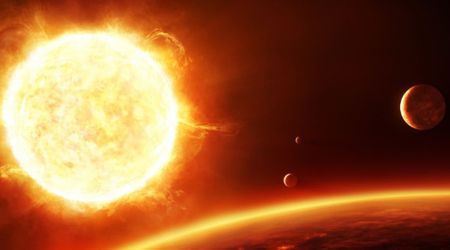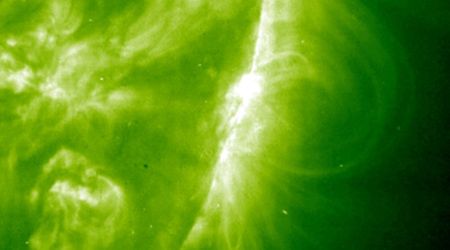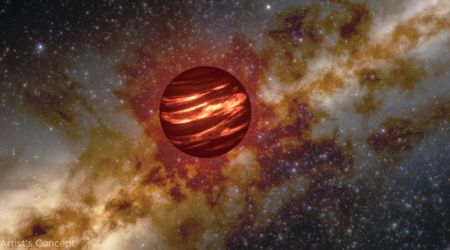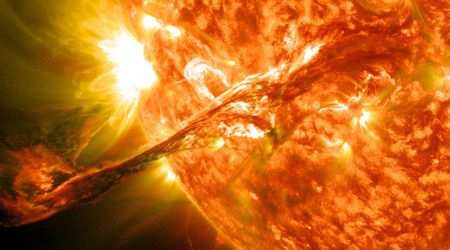What would happen if the sun exploded


In about five billion years, our beloved Sun will start the end of its lifecycle and transform into a red giant and engulf the Earth. But what if something happens earlier and the Sun suddenly explodes? Will everything on Earth be wiped away, or will we have more moments to live? It turns out the answer is a bit more complicated!
It's important to note that the likelihood of the sun exploding is extremely low, but it's still worth discussing the potential consequences of such an event. Understanding the effects of a supernova explosion on our planet can help us appreciate the fragility of life on Earth and the importance of studying our universe. However, it's also worth noting that there are no known measures that can protect against such an event.
What happens if the Sun suddenly explodes?
The Sun has 109 times the diameter of our Earth, and more than 1.3 million planets the size of ours can fit inside it. Despite its enormous size, our star is in the middle compared to other stars, a middle-weight.
Stars that are about ten times more massive than our own go supernova and explode, but there are some exceptions. Despite this, our star is too tiny to go supernovae, but if it hypothetically blows up somehow, we wouldn't know for about eight minutes and twenty seconds.
This is because the Sun is very far away from us, at around 150 million kilometers / 93 million miles on average. The Sun's light reaches us through this distance in eight minutes and twenty seconds.
If the Sun were to blow up somehow in a supernova event, we wouldn't know about it until it's too late also because we wouldn't be able to hear the explosion. This is because the sound carried in space would be too faint.
The explosion would be so powerful that planets such as Mercury, Venus, Earth, and Mars would be completely destroyed. However, all living things on Earth would die before the explosion's light, debris, or shockwaves would reach us.

Neutrinos, the Silent Killer
If the Sun were to explode, the first thing that would annihilate all life on Earth would be radiation in the form of neutrinos. Even though trillions of neutrinos hit our bodies every second, they don't interact with it.
However, during a supernova explosion, neutrinos increase by a factor of ten quadrillions, and their energy goes up as well, drastically increasing the interaction chances. Neutrinos move near the speed of light and carry about 99% of a supernova's energy. This means that most organisms will boil inside out from the interaction in seconds.
What is the scariest thing about neutrinos is that they can travel through anything, so even if you are located on the other half of the Earth facing away from the Sun, you would suffer the same fate. When a supernova was observed in 1987 at about 168,000 light-years away, scientists detected the neutrinos in a couple of seconds, while the light from the explosion was visible only hours later.
This means that if the Sun exploded right now, the neutrinos would vaporize everything on our planet even before the light from the explosion would reach us. However, it all depends on how powerful the explosion is!
Second Scenario
Suppose the Sun's explosion isn't so powerful, and neutrinos don't wipe us out. In that case, the shockwaves produced from the explosion will most likely wipe out everything on the side of our planet facing the Sun.
The other side of Earth would experience a rapid rise in temperature and would most likely be covered in darkness. Since the Sun will be gone, nothing will be powerful enough to keep our planet gravitationally bound in the Solar System.
This means that our planet will become rogue, move out of the solar system, and float in space. A week after the explosion, temperatures on Earth would drop to -18 degrees Celsius / 0 degrees Fahrenheit and continue to do so.
In about a year, the temperatures on Earth might reach -73 C / -100 F, at which point even the oceans would begin to freeze. As our planet continues to float into space, our atmosphere will begin to weaken, and everything will be more exposed to cosmic radiation.
In the most optimistic scenarios, perhaps only bacterial and multicellular lifeforms hidden in the hydrothermal vents will survive. Eventually, our planet might get caught up in another star's gravitational field.
Life might re-emerge if the star is similar to our Sun and if the Earth assumes the same position in this new solar system over the course of millions of years.
Will humanity survive?
If the Sun randomly exploded today or tomorrow, humanity wouldn't survive. However, if the explosion isn't powerful enough and we would know in advance that it will happen, we might have a chance to prolong our existence for a couple of years.
For example, the Earth's temperature underground is warmer the further down you go. At about 10 feet underground, the temperatures are about 23 degrees C / 75 degrees F. With enough resources and the proper technologies, humanity might be able to survive without the Sun for a couple of years in underground fortified bunkers.
Underground farming is also possible using growth lamps, hydroponics, aeroponics, air-dynaponics systems, or container gardens. Through these technologies and techniques, growing edible plants underground might be possible.
Keeping livestock underground and producing energy through nuclear or geothermal means is also possible if there is enough space and humanity prepares in time to perfect the proper technology and techniques.
However, the sad reality is that due to the current conditions, only small colonies of people would be able to survive like this, and only if they were prepared and trained in advance. The good news is that Earth's core will remain hot for millions or possibly billions of years to come.
Can the Sun explode at any given moment?
Even though the aforementioned scenario seems bleak, and it would make for a good movie, it's most unlikely that it will ever happen. The Sun can't just randomly explode out of the blue for no reason.
Based on our current understanding of star phases, our Sun will most likely continue to shine for more than five billion years before it turns into a red giant and engulfs the terrestrial planets. The good news is that our Sun is stable and isn't massive enough to explode into a supernova or transform into a black hole.









